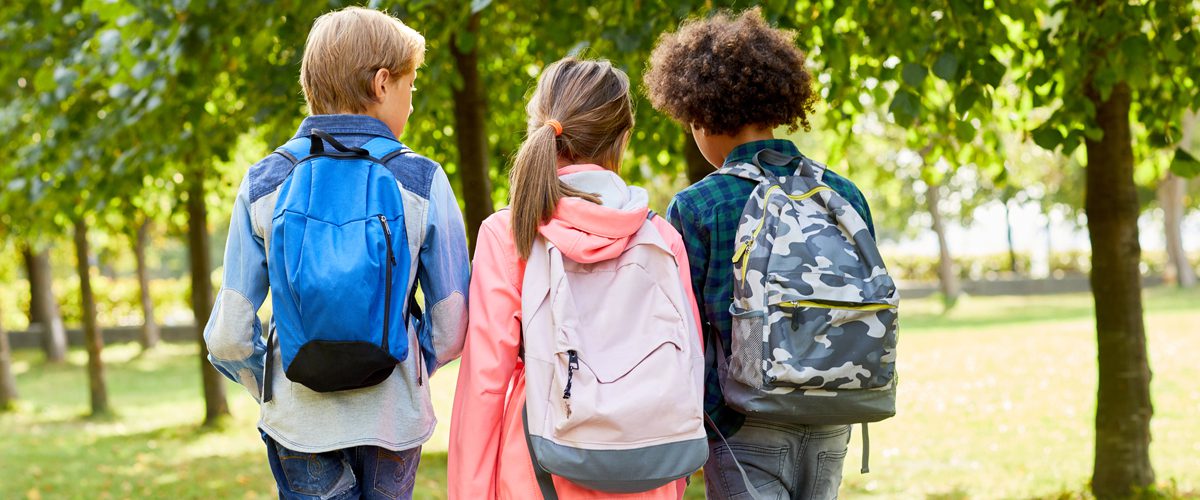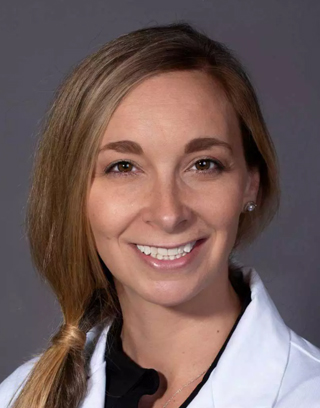What’s the Right Way To Wear a Backpack?
As kids go back to school, an orthopedic surgeon explains how to wear and pack a backpack to prevent back pain.

For a typical day of school, kids need to remember their books, laptops or tablets, folders, school supplies, a water bottle, and other gear. When all that stuff gets loaded into a backpack, it’s a lot to haul back and forth every day — a full water bottle alone weighs about two pounds.
“It adds up,” says Dr. Christen Russo, a pediatric orthopedic surgeon at NewYork-Presbyterian Brooklyn Methodist Hospital and NewYork-Presbyterian Morgan Stanley Children’s Hospital. “Going into the new school year, it’s good for kids and parents to know how much a backpack should weigh and how to maintain good posture throughout the day, which can help prevent lower back pain in children and young adults.”
Back pain is often thought of as an adult condition, but it’s also common in children, especially as they get older. At 7 years old, about 1% of children will have experienced lower back pain, and at 14 to 16 years of age, the number climbs to 18%, according to JAMA Pediatrics.
Most of the time, back pain is not caused by a problem with a child’s spine, says Dr. Russo. Instead, the back pain comes from poor posture. “Poor posture can be due to heavy backpacks, not sitting right in class or at home, or being on a phone or tablet and looking down,” says Dr. Russo, who is also an associate professor of orthopedic surgery at Columbia University Vagelos College of Physicians and Surgeons.
Dr. Russo spoke to Health Matters about how to keep kids’ spines healthy when kids go back to school.

Dr. Christen Russo
Is there a standard for how much a backpack should weigh?
The general rule of thumb is that a child’s backpack shouldn’t be more than 10% to 15% of their body weight, according to the American Academy of Pediatrics. If your child weighs 100 pounds, their backpack should weigh around 10 pounds. If I’m seeing a kid with back pain, I’ll have them bring their backpack to the office and weigh it. Sometimes the backpacks can weigh 20 or 30 pounds.
Is it the weight of the backpack that causes pain?
The weight can play a role, but it’s not the only factor. Knowing how much a backpack should weigh is a good way to start, but it’s also important to choose the right backpack. It should have two padded straps, and kids should wear the pack with both straps to distribute the weight evenly. Also, the backpack shouldn’t sit below the waist area.
What happens if a kid wears a backpack over just one shoulder?
It’s not going to cause a kid’s spine to curve or cause scoliosis, but repeatedly wearing a heavy backpack on one side is going to put strain on one side. You don’t want to overload one side of your body. What happens is that if you don’t use your muscles in the same way, some muscles will become more fatigued than others. So when you do something with the side that you wear backpack, it will hurt.
Besides backpacks, what else can cause back pain in children?
Bad posture when sitting in class or at home or being on a phone or tablet and looking down. In terms of sitting, I tell patients about the 90/90/90 rule. Everything should be at 90-degree angles. Your kid’s feet should be flat on the floor with their ankles at a 90-degree angle. If their feet don’t touch the floor, the chair should come down or they should have something that brings the floor up, like a box or a stool. Then their knee and hip angles should also be 90 degrees, and their neck and eyes should be at 90 degrees to what they’re looking at.
Overdoing it in sports can also cause back pain, especially sports like gymnastics and cheerleading that have continuous hyperextension. In pediatrics we have a rule of thumb that you shouldn’t play the same sport for more hours a week than the number of years old you are. If you’re 10 and you’re playing baseball, you shouldn’t play more than 10 hours of baseball a week. Diversifying the sports is also great for injury prevention because it helps keep the same muscles from getting overused.
Are there red flags that indicate a kid’s back pain is more than just posture related?
Yes. Back pain in kids is never normal. For the most part, it’s due to bad posture, and lifestyle modifications are all that’s needed. But if a kid can point with one finger to where it hurts consistently, and it’s in that same spot over and over, and it’s only on one side, that worries me. If they have pain when lying down or if it wakes them up from sleeping, or pain shoots down one of their legs, that also worries me. Those are indicators that it could be something more serious.
As kids go back to school, how can kids and parents help prevent backpack and posture-related back pain?
One way is by being more conscious of the environment. Make sure your kid is wearing their backpack the right way, with both straps to evenly distribute the weight. When they’re home, encourage good posture when they’re sitting at a desk or using a phone or tablet. Kids don’t like to be told what to do, but sometimes you need to be the annoying parents who say to sit up straight. Bone health is also important. Parents can talk to their pediatrician about giving their kids vitamin D and calcium supplements, especially in the winter when you aren’t getting as much vitamin D from the sun or if your kid plays indoor sports.
Luckily kids tend to bounce back from things easily. If they have postural back pain from their backpack or how they’re sitting at school, making some lifestyle modifications and encouraging physical activity can both treat the pain and keep it from coming back.
Christen Russo, M.D., is a pediatric orthopedic surgeon at NewYork-Presbyterian Morgan Stanley Children’s Hospital and NewYork-Presbyterian Brooklyn Methodist Hospital, and is an associate professor of Orthopedic Surgery at Columbia University Vagelos College of Physicians and Surgeons. She has particular interests in bone health and nutrition, conservative management of adolescent idiopathic scoliosis, and trauma.
Additional Resources
Learn more about operative and nonoperative orthopedic services at NewYork-Presbyterian.
